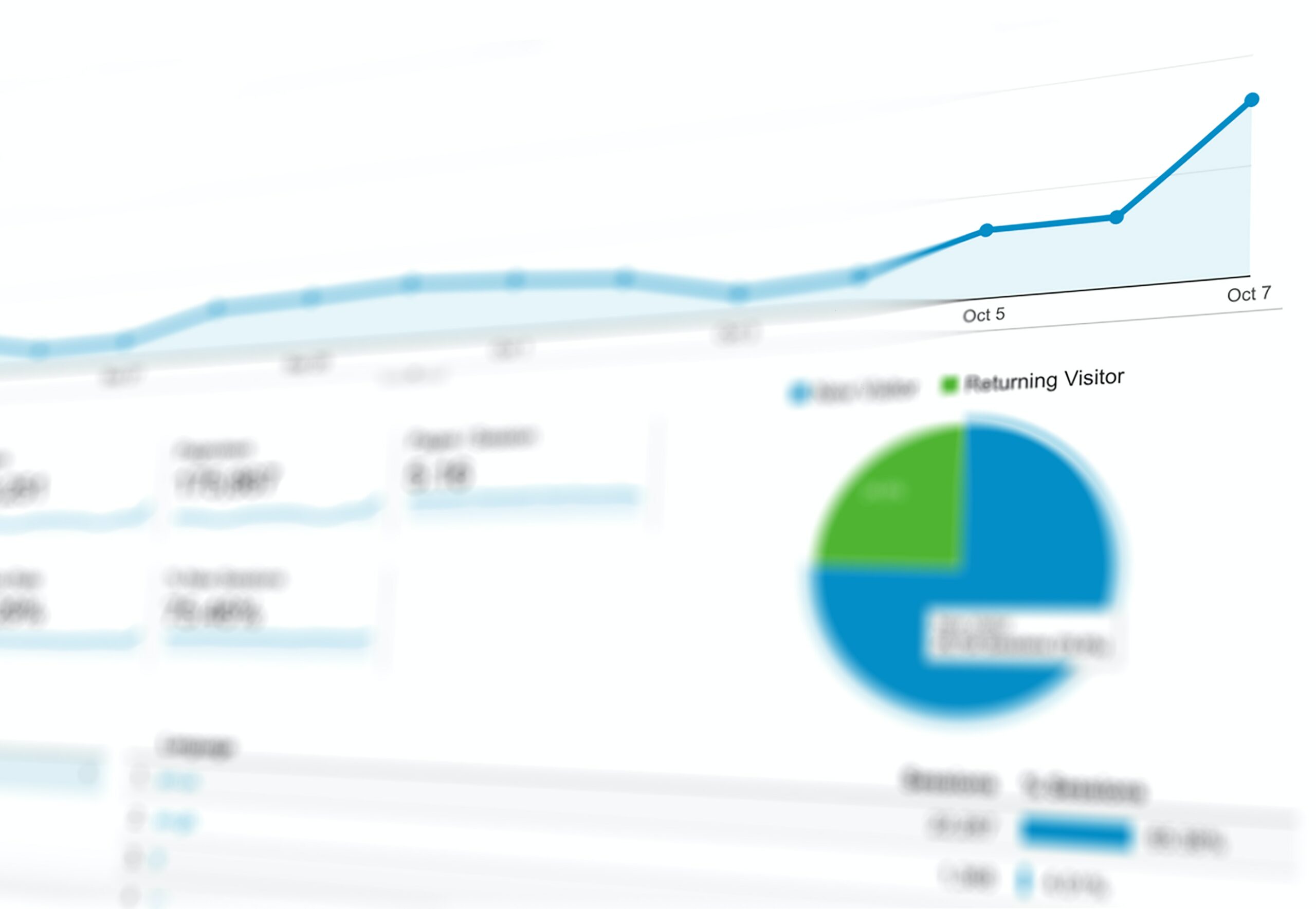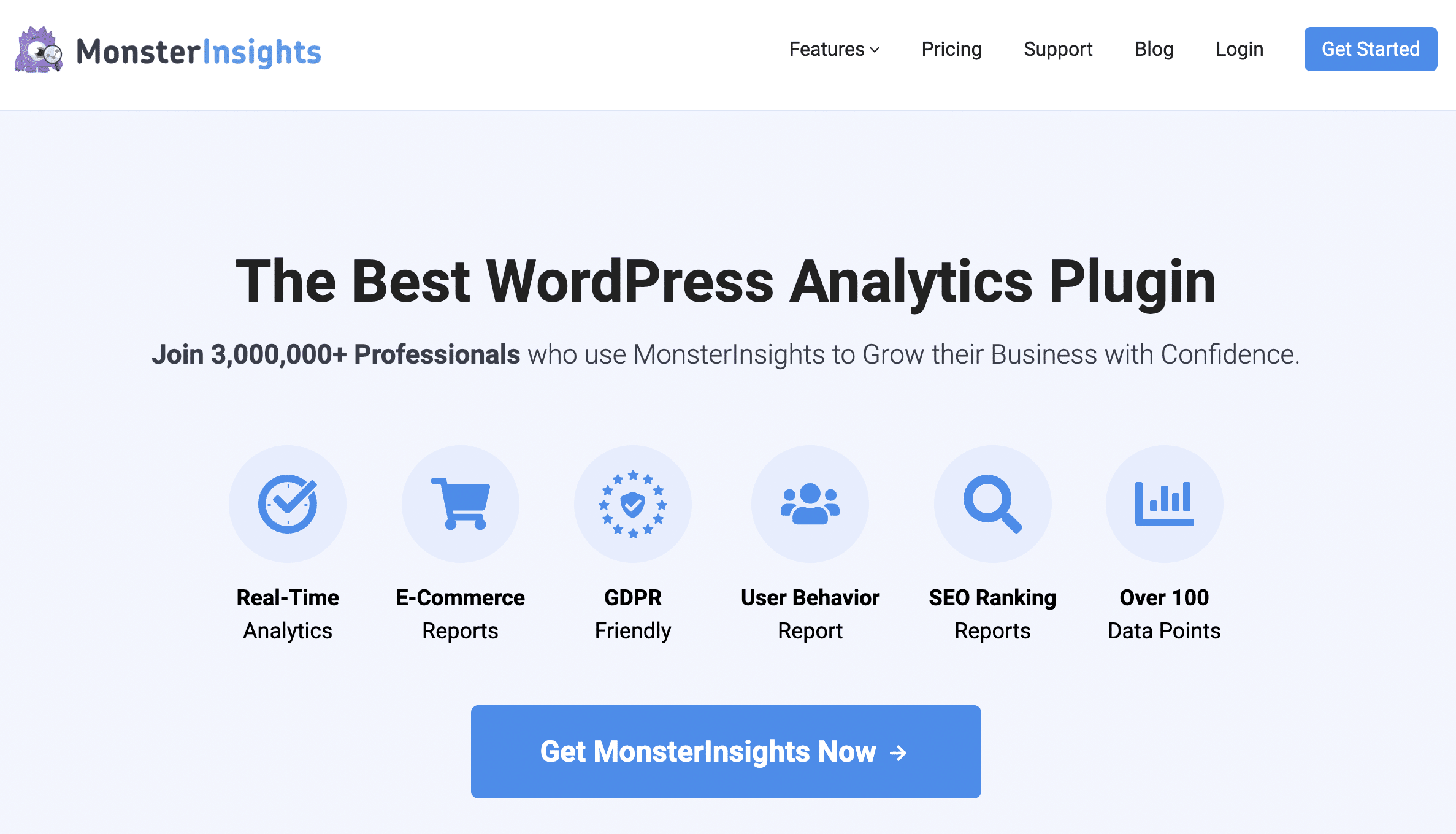In today’s digital age, e-commerce has become an integral part of our lives. As the number of online stores continues to increase, it has become increasingly important to ensure that your e-commerce store stays ahead of the competition. One way to achieve this is by leveraging analytics.
Analytics has become a buzzword in the world of e-commerce, and for good reason. The ability to collect, analyze, and interpret data is critical to the success of online businesses. It allows e-commerce stores to make data-driven decisions and optimize their websites and marketing efforts to attract and retain customers. Without analytics, e-commerce businesses would be left guessing about what works and what doesn’t.
In this blog, we’ll explore the importance of analytics for e-commerce stores, from understanding customer behavior to improving conversion rates, essential WooCommerce reports, tools for tracking E-commerce analytics, and essentially how to overcome the challenges that come with it to reach your business goal.
Why do WooCommerce Reports matter?

Analytics are crucial for e-commerce stores as they provide critical insights into customers’ behavior, preferences, and purchase patterns. By analyzing data, e-commerce stores can identify areas that need improvement, optimize their website, and offer personalized customer experiences, resulting in increased sales and customer satisfaction. In short, analytics enable e-commerce stores to make data-driven decisions that lead to business success.
Analytics in the current E-commerce landscape
Online shopping has become increasingly popular globally, and this trend is expected to continue due to several factors. According to eMarketer, the projected year-over-year growth for global-commerce sales is 12.2%, with sales expected to reach $6.3 trillion in 2023. This growth is projected to continue, with online sales anticipated to reach $8.1 trillion by 2026, an increase of 55.8% compared to total e-commerce sales in 2021.
Although the usage of online shopping varies by region, the rising popularity of e-commerce stores has contributed to a growing number of people turning to online shopping. This trend is driven by factors such as convenience, accessibility, and the ability to compare prices and products easily.
Personalization is also becoming increasingly important in e-commerce. By analyzing customer data, e-commerce stores can offer personalized recommendations, promotions, and marketing messages to improve the customer experience and drive sales.
However, with the growing number of e-commerce stores, it has become increasingly challenging to stand out in the crowded market. Therefore, it is crucial for e-commerce stores to differentiate themselves by offering a unique value proposition, delivering exceptional customer experiences, and optimizing their website for ease of use and functionality.
Analytics is a powerful tool for e-commerce businesses to stand out in a crowded market. By leveraging data to provide personalized customer experiences, optimize website functionality, and track the effectiveness of marketing campaigns, businesses can improve their overall customer experience, leading to increased customer loyalty, engagement, and sales.
Overall, the key to success in e-commerce is to be proactive, adaptive, and customer-centric, constantly seeking ways to improve and stand out in a competitive market.
Key Challenges Facing E-commerce Store Owners
With the current growth of e-commerce come several challenges that e-commerce store owners face. Some of the key challenges that e-commerce store owners encounter include:
Fierce competition
One of the biggest challenges for e-commerce store owners is fierce competition. With countless businesses offering similar products, it can be difficult to differentiate and stand out in the crowded market. This makes it crucial for e-commerce businesses to focus on their unique selling proposition and brand identity to differentiate themselves from the competition.
Inventory management and fulfillment
Managing inventory, and ensuring that products are available and delivered to customers in a timely and cost-effective manner, can be a challenge for e-commerce store owners. This is especially true for stores that deal with a large variety of products, or high volumes of orders.
By using data analytics and inventory management software, e-commerce businesses can streamline their operations and reduce the risk of overstocking or understocking.
User experience and conversion optimization
E-commerce stores must prioritize the user experience and optimize for conversions to drive sales. Ensuring that the website is user-friendly, easy to navigate, and loads quickly are crucial to converting visitors into customers. Additionally, optimizing the checkout process and offering a seamless shopping experience can help to improve conversion rates.
Marketing and customer acquisition
Marketing and customer acquisition are crucial to the success of any e-commerce business. Finding the right marketing channels, creating targeted campaigns, and building a strong social media presence can be a challenge. Additionally, retaining customers and driving repeat sales can be difficult.
How Analytics Can Help Address These Challenges
Analytics can be a powerful tool to help e-commerce store owners address the challenges they face. By leveraging data, businesses can gain insights into customer behavior, preferences, and purchase patterns, which can help them to make informed decisions and optimize their business strategies.

Fierce Competition
By analyzing competitor data, e-commerce store owners can identify areas of opportunity and potential threats. Competitor analysis can provide valuable insights into what customers like and dislike about competitors, which can help businesses to differentiate themselves in the market.
Data can be used to analyze competitor pricing, promotions, and marketing strategies. For example, businesses can use web scraping tools to track competitor pricing and promotions. This data can be used to adjust pricing and promotions, helping businesses to stand out.
Inventory management and fulfillment
By analyzing sales data, businesses can forecast demand and optimize inventory management, ensuring that they have the right products in stock to meet customer demand.
They can use inventory management systems that analyze the sales and inventory data to create automated reorder points, which ensures that the right level of inventory is maintained to meet customer demand. They can also use logistics software that analyzes shipping and fulfillment data to optimize delivery routes, reduce shipping costs, and improve delivery times.
User experience and conversion optimization
Data can be used to analyze website traffic, navigation, and purchasing behavior. For example, businesses can use tools like Google Analytics to track user behavior, identify potential pain points, and improve website functionality. By analyzing this data, businesses can optimize website design, improve website speed, and create targeted landing pages and offers that lead to higher conversion rates.
Marketing and customer acquisition
By analyzing marketing data, businesses can determine which campaigns are driving the most traffic and sales, and adjust their strategies accordingly to improve results. Additionally, by analyzing customer data, businesses can identify areas where they can improve their customer acquisition strategies and improve customer retention rates.
Data can be used to drive improvements in each area of the e-commerce business. By leveraging data, businesses can improve customer experiences, increase sales, reduce costs, improve marketing ROI, and gain a competitive advantage. Ultimately, businesses that embrace data-driven decision-making are more likely to succeed and thrive in the highly competitive e-commerce landscape.
Essential Analytics for Ecommerce Stores
A. Sales Analytics

Sales analytics are essential for e-commerce stores to understand their sales performance, identify areas of opportunity and improvement, and make data-driven decisions to improve their revenue. Here are some of the essential sales analytics that e-commerce stores should track:
Sales volume and revenue
Tracking sales volume and revenue over time provides insight into overall business performance. This metric is essential to understanding the store’s financial health, and growth potential, and identifying seasonal or other trends that may impact revenue.
Average order value
Average order value (AOV) is the average amount of money spent per order. Tracking AOV helps businesses understand how much their customers are spending and whether they are making the most of cross-sell and upsell opportunities.
Conversion rate
Conversion rate measures the percentage of website visitors who complete a desired action, such as making a purchase. Tracking this metric helps businesses identify where customers are dropping off in the purchase process and identify opportunities to optimize the user experience.
Customer lifetime value
Customer lifetime value (CLV) is the amount of money a customer is expected to spend with a business over their lifetime. Tracking CLV is important to identify high-value customers, create personalized experiences, and develop targeted marketing campaigns.
Top-selling products and categories
Understanding which products and categories are selling well is critical for businesses to make informed decisions about inventory management, marketing campaigns, and future product development.
B. Inventory Analytics
Inventory analytics is crucial for e-commerce stores, as they help businesses to optimize their inventory management, reduce costs, and improve customer experiences. Here are some of the essential inventory analytics for e-commerce stores:

Inventory levels
Inventory levels track the quantity of each product in stock, and help businesses to avoid stockouts or overstocking. By analyzing inventory levels, businesses can identify which products are selling quickly, and which ones are not, and make precise decisions about reordering and restocking.
Stock turnover rate
This metric measures the rate at which inventory is sold and restocked. By analyzing stock turnover rates, businesses can optimize their inventory management, ensuring that they have the right products in stock to meet customer demands while avoiding overstocking.
Backorder rate
This measures the percentage of orders that are placed for products that are out of stock. By analyzing backorder rates, businesses can identify which products are frequently out of stock, and make informed decisions about restocking, to avoid stockouts and improve customer satisfaction.
Product performance by SKU
This metric tracks the performance of each product by SKU, providing insights into which products are selling well, and which ones are not. By analyzing product performance, businesses decide on which products to stock, which to discontinue, and which to promote.
C. Customer Behavior Analytics
Customer behavior analytics provides valuable insights into the behavior of customers on the website.
Website traffic and engagement
Website traffic and engagement analytics help e-commerce stores understand how visitors are interacting with their websites. This data can provide insight into the most popular pages, how long visitors spend on the site, and what actions they take.
By analyzing website traffic and engagement, e-commerce stores can make data-driven decisions on website optimization to improve user experience and drive more sales.
Abandoned cart rate.
The abandoned cart rate refers to the number of visitors who added items to their cart but did not complete the purchase. By analyzing this data, e-commerce stores can identify the reasons for cart abandonment, such as high shipping costs or complicated checkout processes. They can then take steps to address these issues and improve the conversion rate.
Customer acquisition and retention
Customer acquisition and retention analytics help e-commerce stores understand how they are attracting and retaining customers. This data can provide insight into which marketing channels are most effective and which customer retention strategies are working.
By analyzing this data, e-commerce stores can optimize their marketing strategies and improve customer loyalty.
Customer segmentation and demographics
Customer segmentation and demographics analytics help e-commerce stores understand their customers, such as their age, gender, location, and purchase history. This data can provide insight into which products are most popular among different customer groups and how to tailor marketing messages to these groups.
By analyzing customer segmentation and demographics data, e-commerce stores can create personalized offers and improve the customer experience.
D. SEO Analytics
SEO analytics is a critical component of the analytics strategy for any e-commerce store. It provides insights into how customers are discovering the store through organic search, and how they are engaging with the store’s content.
Keyword rankings
This metric measures where the store’s website pages rank in the search engine results pages (SERPs) for specific keywords. Keyword rankings are important because they impact the store’s visibility in the search engine results pages, which in turn affects traffic and sales.
By tracking keyword rankings, e-commerce stores can identify opportunities to improve their SEO strategies and optimize their content to rank higher for relevant keywords.
Organic search traffic
Organic search traffic measures how many visitors come to the store’s website from organic search results. It is a critical source of website traffic for e-commerce stores, as it represents customers who are actively searching for the products or services that the store offers.
Tracking organic search traffic allows e-commerce stores to identify which pages and products are driving the most traffic and optimize their content accordingly.
Click-through rate
Click-through rate (CTR) measures the percentage of users who click on the store’s website link in the search engine results pages. CTR is important because it reflects the store’s ability to attract clicks and capture the attention of potential customers.
By monitoring CTR, e-commerce stores can identify opportunities to improve their meta descriptions, titles, and other on-page elements to increase their click-through rates and drive more traffic to their website.
Bounce rate
This metric measures the percentage of visitors who leave the store’s website after viewing only one page. A high bounce rate can indicate that the website is not meeting the expectations of visitors, or that it is difficult to navigate.
By tracking bounce rate, e-commerce stores can identify areas of their website that need improvement, such as slow-loading pages, confusing navigation, or unattractive design.
Tools for Tracking Ecommerce Analytics
Tracking e-commerce analytics is essential for any e-commerce business looking to make data-driven decisions. There are several tools available that can help businesses track their analytics.
A. Google Analytics
Overview of Google Analytics for e-commerce stores
Google Analytics is one of the most widely used tools for tracking e-commerce analytics. It is a free web analytics service provided by Google that allows businesses to track website traffic, user behavior, and other key metrics. It provides a wealth of data, including information on website visitors, bounce rates, conversion rates, and revenue.
It also allows businesses to set up and track goals, such as newsletter sign-ups or product purchases, to measure the success of their marketing campaigns.
Google Analytics offers a wide range of reports, including audience reports, acquisition reports, and behavior reports. These reports help businesses to understand their customers better and to identify areas for improvement.
Setting up e-commerce tracking in Google Analytics
Before you can start collecting data about your e-commerce sales and revenue, you need to set up your e-commerce tracking in Google Analytics and add tracking to your online store.
Here’s how:
- Step 1:
Open your Google Analytics account and click on the Admin button. This can be found in the bottom left corner.
- Step 2:
Ensure that you are working in the appropriate view. To choose the view you wish to activate, click the dropdown at the top of the View column.
- Step 3:
Click the Ecommerce Settings button in the same View column.
- Step 4:
Enable e-commerce by clicking on the on/off toggle. After completing this, you will access the option to activate Enhanced Ecommerce Reporting, which provides supplementary information and enables you to personalize labels for each stage of your checkout procedure.
Although not mandatory, it is advisable to use Enhanced E-commerce. This feature provides you with information on how your users navigate through the checkout process.
- Step 5:
Hit the “Save” button.
- Step 6:
Add the e-commerce tracking code to your site. To create your Google Analytics tracking ID, go to Admin on your site in Google Analytics. Next, select Tracking Info and then Tracking Code to retrieve the code.
Copy the tracking ID and add it to your e-commerce store.
Need more help? Read our blog post on how to set up Google Analytics on your WooCommerce store.
Key reports and metrics to track
Here are key reports and metrics to track for e-commerce on Google Analytics:
- Sessions – This metric represents the number of times a user has interacted with your website during a given period. It is the foundation of all e-commerce tracking, as it provides insight into the volume of traffic coming to your site. You can use this metric to track changes in traffic patterns over time and to identify the sources of traffic to your site.
- Conversion rate – The conversion rate is the percentage of visitors who complete a desired action, such as making a purchase or filling out a form. It is a critical metric for measuring the effectiveness of your e-commerce site and marketing efforts. You can use this metric to identify areas where you can improve the user experience or optimize your marketing campaigns to increase conversions.
- Average order value – The average order value (AOV) is the average amount spent by a customer during a single transaction. This metric can help you understand your customers’ buying behavior and identify ways to increase revenue per transaction. You can use this metric to track changes in AOV over time and to identify which products or product categories have the highest AOV.
- Product performance – Product performance metrics provide insights into which products are driving the most sales and revenue. You can use this information to optimize your product offerings and identify opportunities for cross-selling and upselling. Product performance metrics can also help you identify trends in product demand and adjust your inventory accordingly.
- Shopping behavior analysis – Shopping behavior analysis is a funnel report that shows how users interact with your site during the shopping process, from product views to purchases. This report can help you identify areas where users are dropping out of the shopping process and optimize your site to improve the user experience.
- Abandoned cart rate – The abandoned cart rate is the percentage of users who add products to their cart but don’t complete the checkout process. This metric can help you identify areas where users are encountering obstacles in the checkout process and optimize your site to reduce cart abandonment.
- Site search – Site search metrics provide insights into what users are searching for on your site. This information can help you identify popular products, user needs, and areas where your site’s content may be lacking.
B. WooCommerce Analytics Plugins
WooCommerce is a popular e-commerce platform that runs on WordPress. It provides a range of e-commerce features, including the ability to add products, manage orders, and process payments. However, if you want to track your store’s performance and gain insights into your customers’ behavior, you’ll need to use an analytics plugin. Here’s an overview of some of the top WooCommerce analytics plugins available:
YITH WooCommerce Wishlist
YITH WooCommerce Wishlist is a plugin that allows users to create wishlists on your WooCommerce store. It is not specifically an analytics plugin, but it can provide valuable insights into user behavior and preferences, as well as help you track which products are most popular among your customers.
MonsterInsights

MonsterInsights is a popular analytics plugin for WordPress that includes WooCommerce tracking capabilities. It allows you to track e-commerce data such as revenue, conversion rate, and average order value, as well as gain insights into user behavior and demographics. It also includes features such as abandoned cart tracking and product performance reports.
Metorik

Metorik is a powerful analytics and reporting tool for WooCommerce that provides real-time data on sales, revenue, and customer behavior. It includes features such as customer profiles, order tracking, and email marketing integrations. Metorik offers a range of plans, with pricing based on the number of orders processed per month.
C. Other Ecommerce Analytics Tools
In addition to WooCommerce analytics plugins, there are several other e-commerce analytics tools that can help you gain insights into your online store’s performance. Here are some other tools you might consider:
- Inventory management software
Inventory management software can help you track and manage your product inventory, as well as monitor sales and stock levels. This can help you ensure that you always have the right products in stock and avoid overstocking or understocking. Some popular inventory management tools for e-commerce include:
- TradeGecko
- Stitch Labs
- SkuVault
- Marketing automation platforms
Marketing automation platforms can help you automate your marketing efforts, from email campaigns to social media advertising. This can help you save time and improve the effectiveness of your marketing efforts. Some popular marketing automation tools for e-commerce include:
- HubSpot
- Marketo
- Klaviyo
- Customer feedback and survey tools
Customer feedback and survey tools can help you gather valuable insights from your customers and identify areas where you can improve your online store. This can help you improve customer satisfaction and increase sales. Some popular customer feedback and survey tools for e-commerce include:
- SurveyMonkey
- Qualtrics
- GetFeedback
Let our “woo” ninjas help you select and configure the best set of tools to take your WooCommerce reports and analytics to the next level. Learn more about our WooCommerce services!
Best Practices for Analyzing Ecommerce Data
Setting Goals and KPIs
Setting clear goals and key performance indicators (KPIs) is essential for measuring the success of your e-commerce store and ensuring that you are making progress toward achieving your objectives. This helps you identify areas where you are performing well and areas where you need to improve.
They also provide a clear direction and purpose for your team, helping to ensure that everyone is working towards the same objectives. This can help improve productivity and motivation.
Examples of common goals and KPIs for e-commerce stores include:
- Goal: Increase sales
KPIs: Revenue, conversion rate, average order value, repeat customers, customer acquisition cost, and lifetime customer value.
- Goal: Improve customer experience
KPIs: Customer satisfaction score, net promoter score, customer retention rate, average response time to customer inquiries, and percentage of returned items.
- Goal: Increase website traffic
KPIs: Website traffic, bounce rate, time on site, pages per session, and new vs. returning visitors.
- Goal: Increase social media engagement
KPIs: Social media followers, engagement rate, click-through rate, conversion rate, and social media referral traffic to the website.
Analyzing and Interpreting Data
Analyzing and interpreting data is an important part of any e-commerce analytics strategy. Here are some tips for making sense of complex data and using it to identify trends and opportunities:
- Start with clear objectives: Before you start analyzing your data, make sure you have clear objectives and goals in mind. What are you trying to achieve? What data do you need to collect to achieve those objectives? Having clear objectives can help you focus your analysis and avoid getting lost in the data.
- Use visualizations: Visualizations such as charts and graphs can help you understand complex data more easily. They can help you identify trends and patterns that might not be obvious in raw data. Make sure your visualizations are clear and easy to understand.
- Look for outliers: Outliers are data points that fall far outside the norm. They can provide valuable insights into unusual customer behavior or product performance. Look for outliers in your data and try to understand what might be causing them.
- Segment your data: Segmenting your data by customer, product, or other factors can help you identify trends and opportunities that might be hidden in the aggregate data. For example, segmenting your data by customer demographics can help you identify which customer groups are most profitable.
- Use A/B testing: A/B testing involves testing two versions of a product or marketing campaign to see which performs better. A/B testing can help you identify which changes are most effective in improving sales or customer engagement.
- Use data to inform decision-making: Use the data to make data-driven decisions about how to improve your online store. For example, you might use the data to make decisions about which products to stock, how to price your products, or which marketing campaigns to run.
Taking Action on WooCommerce Reports
Taking action on insights is a crucial step in using e-commerce analytics to improve your online store’s performance. When implementing data-driven changes:
- Prioritize your insights: Not all insights are equally important. Prioritize your insights based on their potential impact on your business. Focus on the insights that are most likely to improve your sales, revenue, or customer satisfaction.
- Set goals: Set specific, measurable goals for each insight you want to implement. For example, if you want to improve your conversion rate, set a specific target for the increase you want to achieve.
- Test and iterate: Implement changes in small increments and test their effectiveness using A/B testing. This can help you identify which changes are most effective and avoid making large-scale changes that could backfire.
- Communicate with your team: Make sure your team understands the insights you’ve gained from your e-commerce analytics and the changes you’re implementing. This can help you gain buy-in from your team and ensure everyone is working towards the same goals.
- Monitor and adjust: Once you’ve implemented changes, monitor their effectiveness over time and make adjustments as needed. Keep a close eye on key metrics such as sales, revenue, and conversion rate. Make sure you’re tracking these metrics before and after making changes so you can measure their impact.
- Continuously improve: E-commerce analytics is an ongoing process. Continuously analyze your data and look for new insights that can help you improve your online store’s performance.
It’s rare that a change will have the exact impact you’re expecting. Be prepared to adjust your strategy and make further changes based on the results you’re seeing.
Value of Generating and Analyzing WooCommerce Reports
A. Improved Decision-Making
Gathering and analyzing e-commerce data is critical to improving decision-making within your business. You can make data-driven decisions like:
- Using A/B testing to optimize product pages for maximum conversions
- Analyzing customer demographics to identify which customer segments are most profitable
- Monitoring key metrics such as bounce rate and time on page to identify areas for website optimization
- Using predictive analytics to forecast sales and plan inventory management
- Analyzing data on customer feedback and reviews to improve product quality and customer satisfaction.
By doing this, you can enjoy the benefits of making data-driven decisions like:
- Identify Opportunities: By analyzing e-commerce data, you can identify opportunities to improve sales, increase customer loyalty, or optimize marketing campaigns.
- Reduce Risk: Analyzing data can also help reduce risk by allowing you to make more informed decisions.
- Prioritize Resources: Analyzing data can also help you prioritize your resources by identifying areas of your business that are performing well and those that require more attention.
- Monitor Performance: Analyzing data can also help you monitor your performance over time, allowing you to identify trends, spot anomalies, and make necessary adjustments. For example, if you notice a dip in sales during a particular time of year, you might investigate further to identify the root cause of the issue.
B. Optimized User Experience
User experience is critical to the success of an e-commerce business. By prioritizing user experience, businesses can create a positive first impression, foster customer satisfaction, and loyalty, and gain a competitive advantage in a crowded market.
Here are some ways online stores can leverage their WooCommerce reports to optimize the user experience:
- Personalize the user experience: Personalization is a key driver of customer satisfaction and loyalty. By analyzing customer data, e-commerce sites can create personalized product recommendations, marketing messages, and shopping experiences.
- Improve website navigation: Analyzing data on user behavior can help e-commerce businesses identify areas where customers are getting stuck or frustrated. By making improvements to website navigation and user experience, e-commerce businesses can improve the user experience and reduce bounce rates.
- Optimize product pages: By analyzing data on product performance, e-commerce businesses can make data-driven decisions about product development and marketing.
- Streamline checkout: The checkout process is a critical part of the user experience. By analyzing data on cart abandonment rates and checkout behavior, businesses can identify areas where customers are dropping off and make changes to streamline the checkout process.
- Improve customer service: By analyzing data on customer behavior and feedback, businesses can identify areas where customer service can be improved. This can include improving response times, offering more channels for customer support, or providing more detailed product information.
C. Increased Efficiency
Gathering and analyzing e-commerce data can provide significant value to your business, including increased efficiency in managing inventory and operations. There are several challenges that come with managing inventory and operations, such as:
- Fluctuating demand
- Inventory management complexity
- The complex and time-consuming process of shipping and fulfillment
However, using analytics tools for inventory management and operations allows you t:
- Perform real-time inventory tracking: Analytics tools can provide real-time visibility into inventory levels and help you avoid stockouts or overstocking. This can help you make data-driven decisions about inventory management and improve your forecasting accuracy.
- Automate your inventory management: Analytics tools can help you automate your inventory management processes, such as reorder alerts and demand forecasting. This can save time and reduce errors in inventory management.
- Optimize fulfillment processes: Analytics tools can help you optimize your shipping and fulfillment processes, by identifying bottlenecks, reducing errors, and improving the efficiency of logistics. This can help you reduce shipping costs and improve customer satisfaction.
D. Better Marketing Results
Marketing is an essential component of any e-commerce business, as it helps to attract and retain customers and increase sales. By using data to optimize marketing spending and drive results, e-commerce stores can improve their marketing ROI and generate more revenue. Online stores can use data to improve their marketing efforts by:
- Targeted advertising: Analyzing customer data to identify demographics, interests, and behaviors to create targeted ads that resonate with the target audience and drive conversions.
- Personalization: Collect data on customer preferences, browsing behavior, and purchase history to create personalized marketing campaigns that increase customer engagement and loyalty and drive sales.
- Retargeting: Targeting customers who have visited the website or added items to their cart but did not complete the purchase with customized ads or offers to drive conversions.
- Social media marketing: Analyzing data on customer behavior, preferences, and interests to create effective social media marketing campaigns that generate engagement and drive sales
- Email marketing: Analyzing data on customer behavior to create more targeted and personalized email campaigns that increase opens, clicks, and conversions.
E. Enhanced Customer Satisfaction
Customer satisfaction is a critical factor in the success of any e-commerce business. When customers are satisfied, they are more likely to make repeat purchases, recommend your store to others, and leave positive reviews. On the other hand, if customers are dissatisfied, they are more likely to leave negative reviews, abandon their shopping carts, and not return to your store.
To improve customer satisfaction in e-commerce, it’s important to understand customer behavior and preferences. Here are some ways WooCommerce Reports can help:
- Analyze customer feedback: Collect customer feedback through surveys and reviews, and use data analytics tools to analyze the results. This can help you understand what customers like and dislike about your business, and identify areas for improvement.
- Segment your customers: Use data to segment your customers based on demographics, purchase history, and other factors. This can help you tailor your offerings to better meet their needs and preferences.
- Monitor key metrics: Keep a close eye on key metrics such as customer satisfaction scores, customer lifetime value, and customer retention rates. By tracking these metrics over time, you can identify trends and areas for improvement.
- Use A/B testing: A/B testing can help you understand which changes to your website, product offerings, or marketing campaigns are most effective in improving customer satisfaction.
Overcoming Common Challenges with WooCommerce Reports
Ecommerce analytics is a complex field, and there are several common challenges that online businesses face when trying to gather and analyze data. They include:
Technical Challenges
Some technical issues of e-commerce analytics include tracking and data issues as well as problems of dealing with incomplete or inaccurate data. Here are some troubleshooting tips for tracking and data issues:
- Verify tracking code installation.
- Check for duplicate tracking.
- Look for data gaps.
- Check for data discrepancies.
- Use filters and segments to clean up data.
- Consult with technical support.
If you are dealing with incomplete or inaccurate data, follow these tips:
- Use Multiple Data Sources: Gather information from various sources, such as website traffic data, sales data, customer support tickets, and other relevant data sources.
- Verify Your Data: Regularly check and test your data to ensure its accuracy. Look for outliers or anomalies that may indicate errors.
- Clean up Your Data: Remove duplicate entries and correct errors, such as spelling mistakes, to improve data accuracy and analysis.
- Use Data Visualization Tools: Utilize charts, graphs, and other data visualization tools to identify trends and patterns in your data, even if it’s incomplete or inaccurate.
- Consider Using a Data Analyst: If you lack the skills or resources to manage your e-commerce analytics, consider hiring a data analyst or outsourcing to a third-party service. A data analyst can help you clean up your data, verify the accuracy, and identify trends and opportunities.
Resource Constraints
One of the common challenges with e-commerce analytics is managing and analyzing large volumes of data. With so much data available, it can be difficult to know where to focus your efforts.
Here are some strategies for prioritizing and focusing your WooCommerce Reports:
- Set clear goals: Before starting to analyze data, it’s important to set clear goals and KPIs. Prioritize data sources: Not all data sources are created equal. Prioritize the data sources that are most relevant to your goals and KPIs, and focus your efforts on those sources first.
- Use visualization tools: Visualization tools such as dashboards and charts can help you quickly identify trends and patterns in your data.
- Segment your data: Segmenting your data based on factors such as demographics, purchase history, and behavior can help you identify patterns and trends that might not be visible in the overall data.
- Use automation tools: Automation tools such as machine learning algorithms and predictive analytics can help you quickly analyze large volumes of data and identify trends and patterns.
- Prioritize action: Don’t get bogged down in analysis paralysis. Use your data to identify actionable insights and prioritize the actions that will have the biggest impact on your business.
Organizational Buy-In
One of the common challenges with e-commerce analytics is getting stakeholders on board with a data-driven approach. Decision-makers may be resistant to change or skeptical about the value of e-commerce analytics.
Here are some tips for communicating the value of analytics to decision-makers:
- Emphasize the business benefits: Highlight the potential benefits of e-commerce analytics for the business, such as increased sales and revenue, improved customer satisfaction, and more efficient operations.
- Provide concrete examples: Use real-world examples to demonstrate the value of e-commerce analytics.
- Use data visualization: Data visualization tools can help you present complex data in a way that is easy to understand. By presenting data in a visual format, decision-makers can more easily see the insights and trends you’re trying to communicate.
- Speak their language: Use language that resonates with decision-makers. Avoid jargon and technical language that may be difficult for non-technical stakeholders to understand.
WooCommerce Reports
E-commerce businesses need to be proactive, innovative, and adaptive in a crowded market. Analytics is one powerful tool that can be leveraged by these businesses to stand out. Data obtained from these analyses can be used to provide personalized customer experiences, optimize website functionality, and track the effectiveness of marketing campaigns.
Doing this, businesses can improve their overall customer experience, increase their engagement, and improve sales.



